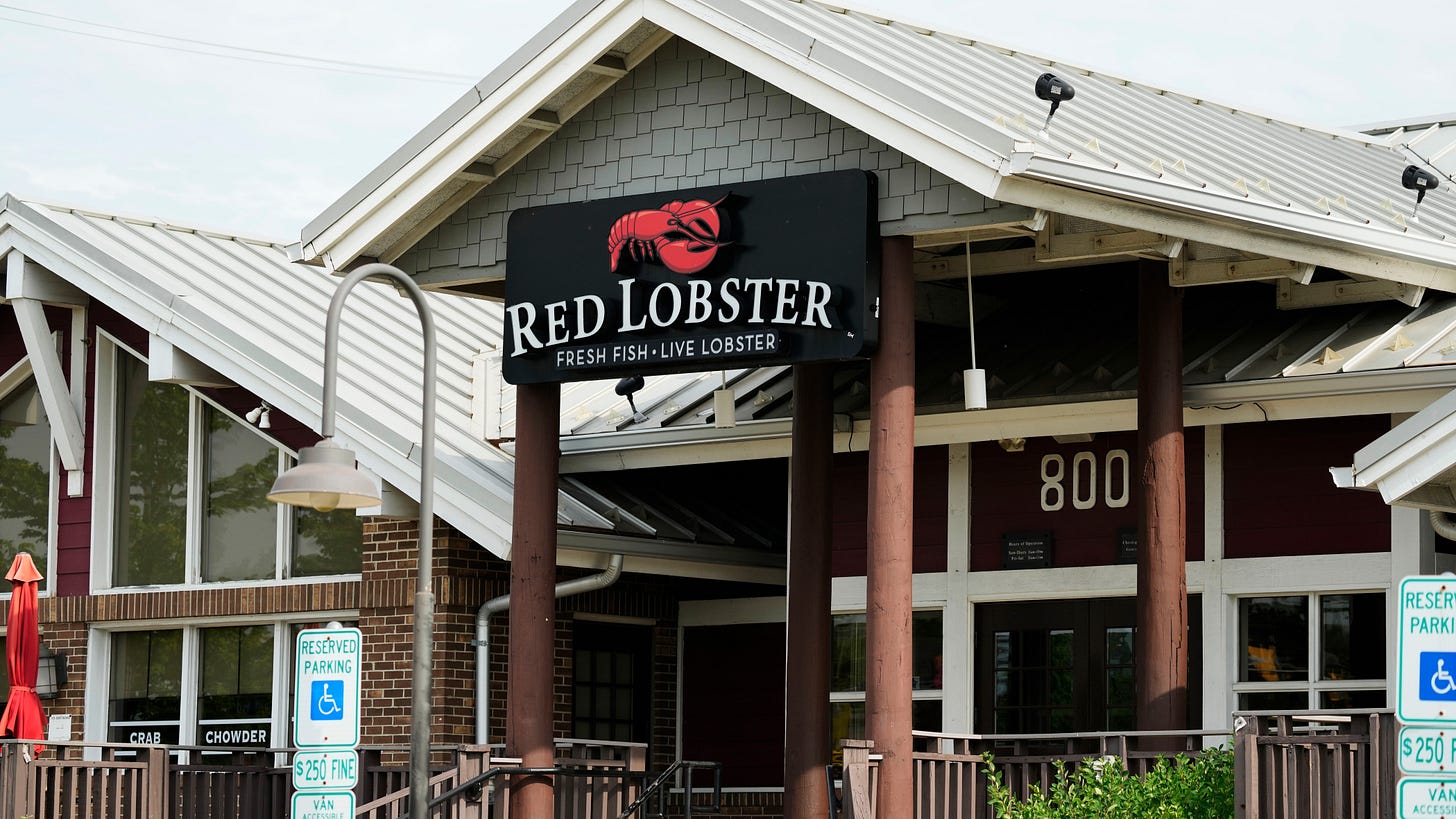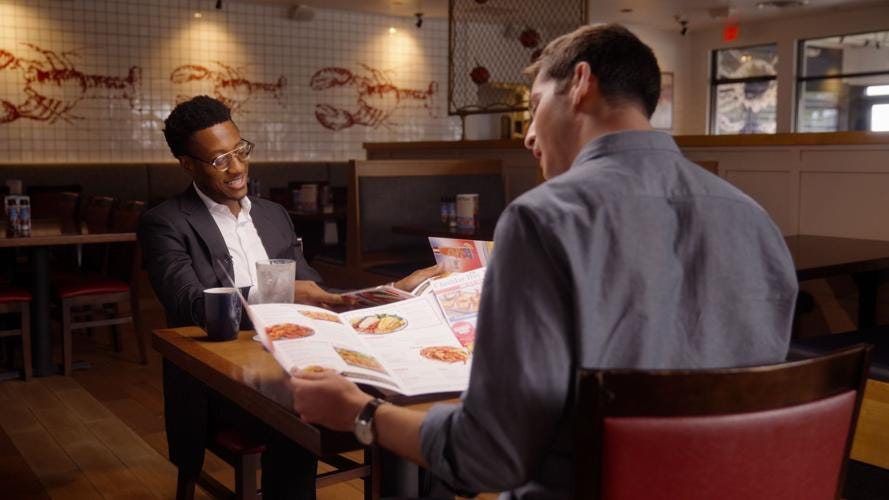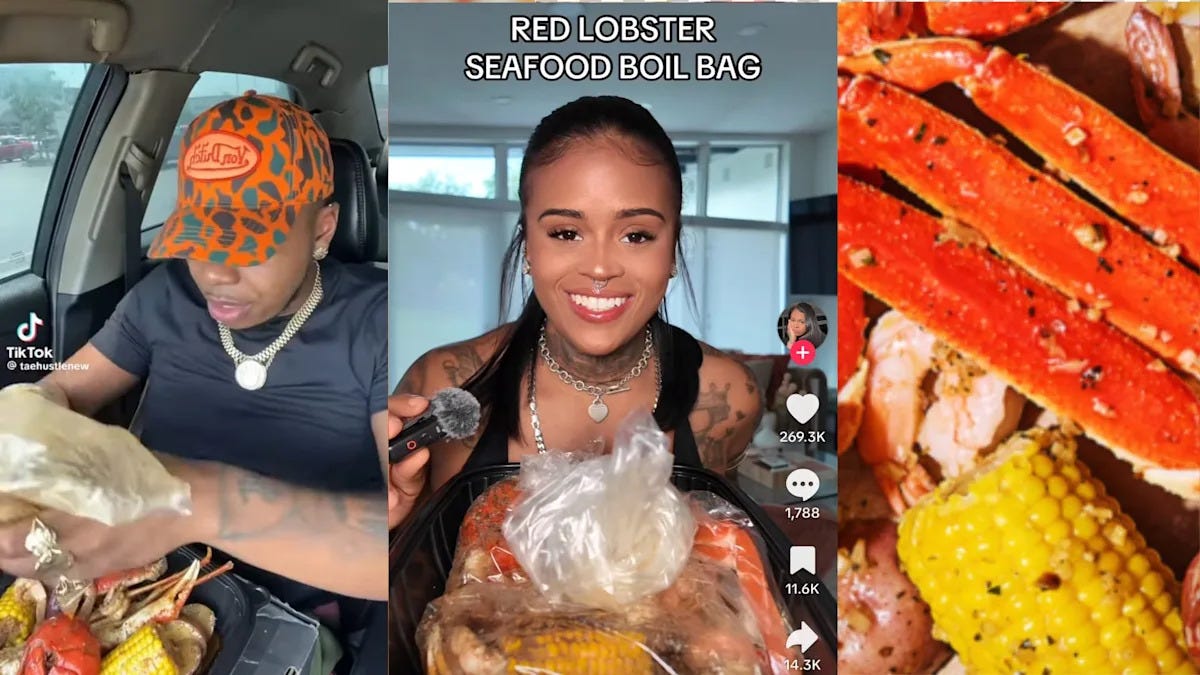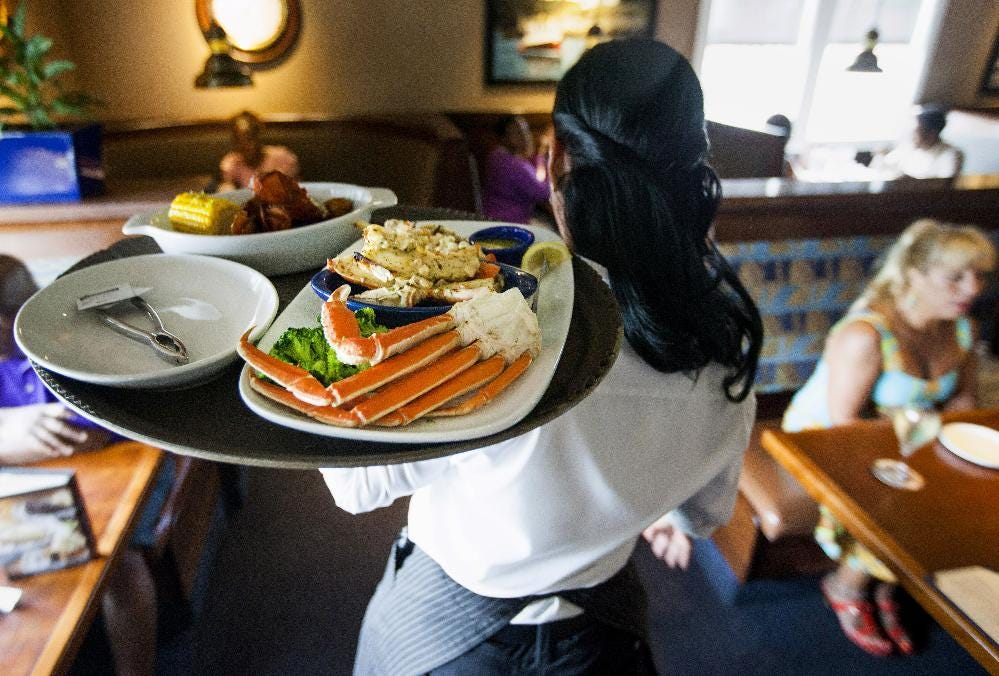The Instigation Dispatch: 7/15/25 POWERED BY MINTEL
In a free sneak peek at what The Instigation Department is capable of, this week we're flexing our Mintel LEAP partnership to talk about Red Lobster's resurgence through demand intelligence.
For those unfamiliar, in May, the Instigation Department became a partner with Mintel to help us create a solid foundation for insights, supplemental data for research, and enhanced consumer understanding. Leveraging their LEAP artificial intelligence tool, this partnership has yielded some amazing results and outputs for some of our clients and partners.
And, while we can’t show you all of the work that we’ve done with them, we can give you this real-time situational analysis to give you a sense of how it can look. So, today we’re looking at Red Lobster and trying to understand how leaning into cultural competence and how brands can leverage a targeted insight to increase demand and revenue.
Let’s talk about the bridge between cultural competence and demand intelligence…
Cultural Competence Is Demand Intelligence: How Red Lobster Reconnected with Black Consumers and Revived Its Business
When Red Lobster filed for Chapter 11 bankruptcy in 2024, most people assumed the cheddar biscuits would outlive the brand. The once-iconic seafood chain had lost its footing in a casual dining landscape where experience, not just value, drives loyalty. Somewhere between “Endless Shrimp” promos and aging décor, Red Lobster had become easy to forget.
But it didn’t fade.
Instead, it found a new playbook. And it wasn’t about starting over; it was about getting back in alignment with the people who built its legacy. The brand’s turnaround didn’t come from a viral ad campaign or a celebrity partnership. It came from a sharper understanding of the cultural cues that drive dining decisions, especially among Black consumers.
This is a story about how cultural competence became demand intelligence. And it’s working.
A Market Hidden in Plain Sight
One of the smartest moves Red Lobster made was recognizing something that should’ve always been obvious: Black consumers are essential to the health of the restaurant industry.
According to Mintel’s 2024 “Black Consumers and the Restaurant Decision-Making Process” report:
78% of Black consumers visited a fast food restaurant in the past three months
59% visited a fast casual or casual dining restaurant
Urban Black consumers over-index in these categories, citing affordability, convenience, and menu variety as key motivators
In other words, Red Lobster didn’t need to invent a new customer base. It needed to reconnect with one it already had, but hadn’t prioritized.
Culture as a Competitive Advantage
When new CEO Damola Adamolekun took over in August 2024, his vision wasn’t framed around buzzwords. It was built on one core question:
How do we make this brand feel right again for the people who actually want to be here?
That question led to three major shifts:
1. They Delivered Familiar Food with Emotional Resonance
The menu refresh brought back items like hush puppies and popcorn shrimp, dishes that aren’t just tasty, but culturally familiar. These are fish fry staples. Community table food. Meals tied to memory and tradition.
The brand also introduced Crabfest seafood boils served in shake-and-serve bags with smoked sausage, potatoes, corn, and your choice of Cajun or garlic butter. It wasn’t just a menu update, it was a nod to Southern Black culinary heritage and communal dining culture.
📊 What the data says:
Flavor and variety are top motivators, especially for younger and single Black consumers who seek bold, satisfying meals【Mintel LEAP 1.3, 1.11】
Familiarity and trust matter—chains that offer reliable, quality meals get repeat business【LEAP 1.9, 1.10】
Red Lobster used this insight to serve up comfort and consistency. And diners noticed.
2. They Reframed Value Without Cheapening the Experience
Instead of leaning into gimmicks like “Endless Shrimp,” the brand launched smart-value deals that respected the customer’s time and wallet:
$19.99 three-course Shrimp Sensation
$5 premium cocktails (including STILL G.I.N. by Snoop and Dre)
An appetizer strategy that encourages flavor exploration without over-spending
📊 What the data says:
Price is the top barrier for Black consumers when dining out, but it’s not just about being the cheapest, it’s about feeling like the meal was worth it【LEAP 1.1–1.4】
Flexible pricing and bundle options attract budget-conscious Millennials and Gen Z diners
By elevating value rather than racing to the bottom, Red Lobster regained credibility.
3. They Focused on Experience as a Signal of Respect
In Mintel’s data, one insight stood out clearly: cleanliness and ambience matter—deeply. For many Black diners, a clean, well-maintained environment signals more than hygiene. It signals respect.
Red Lobster responded by launching “RED Carpet Hospitality,” a service reset focused on warmth, consistency, and intention. Think: smiling hosts, staff walking you to the restroom, and personalized touchpoints.
And it’s not just surface-level. The brand has committed to investing $500,000 per restaurant to remodel all 545 U.S. locations over the next few years. The first refresh? Atlanta. Not a coincidence.
📊 What the data says:
41% of Black consumers cite cleanliness as a top factor in restaurant choice【LEAP 1.1, 2.1】
Ambience, service, and trust outweigh convenience for many diners who want experiences that feel worthwhile【LEAP 1.5, 3.1】
Red Lobster turned that insight into an intentional vibe shift, and positive reviews are now outpacing negative ones for the first time in years.
Tech That Adds Value, Not Friction
From online ordering to loyalty perks, Red Lobster also recognized the importance of digital ease, especially for younger Black consumers.
📊 What the data says:
Black consumers are more likely to use mobile apps, digital payments, and share data in exchange for personalized deals【LEAP 1.5–1.8】
Social media is a discovery engine—Instagram, TikTok, and YouTube are go-to platforms for new restaurant recommendations【LEAP 2.1】
The brand leaned into this by designing dishes (like seafood boils) that look great on camera, while streamlining ordering and personalization on the backend.
Cultural Competence = Demand Intelligence
Here’s the heart of the strategy: Red Lobster didn’t frame its turnaround around “diversity.” It wasn’t a PR move. It was a business move rooted in understanding the cultural realities of a key audience.
That’s cultural competence. And when applied with care, it becomes demand intelligence, the ability to anticipate what a market wants before it has to ask for it.
📊 And according to Mintel:
Black consumers place high value on how restaurants treat employees, engage with the community, and align with social values【LEAP 1.8, 1.9】
Reputation and word-of-mouth remain powerful motivators for both discovery and avoidance【LEAP 1.6, 1.18】
Red Lobster made a conscious decision to improve the full guest experience—not just the menu. And that shift is being rewarded in brand sentiment, customer return rates, and market buzz.
The Bigger Lesson: This Is How You Grow
Red Lobster’s rebound offers a modern blueprint for any brand looking to grow in a fractured marketplace:
Start with real insight, not assumptions
Honor cultural context as a core business driver
Deliver consistency, care, and quality, without condescension or shortcuts
Black consumers are not a niche. They’re a powerful market segment with clear preferences, high expectations, and cultural influence. The brands that take the time to listen, learn, and build for them won’t just survive, they’ll lead.
Red Lobster didn’t pivot to perform. They evolved to connect.
And that’s the smartest thing a brand can do.






